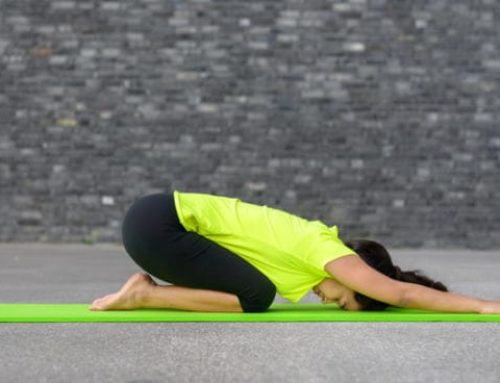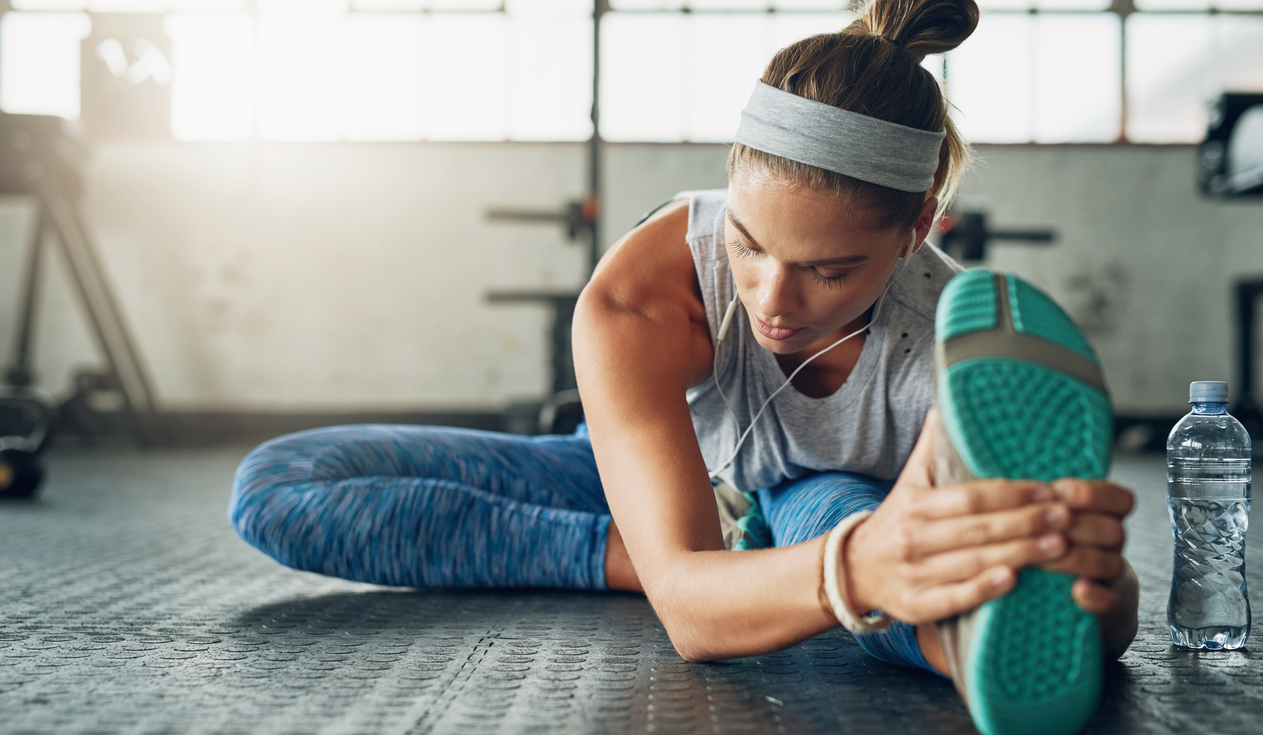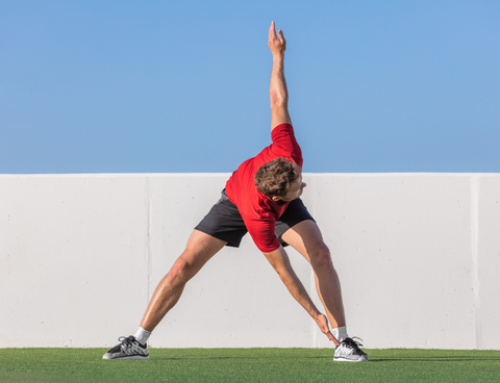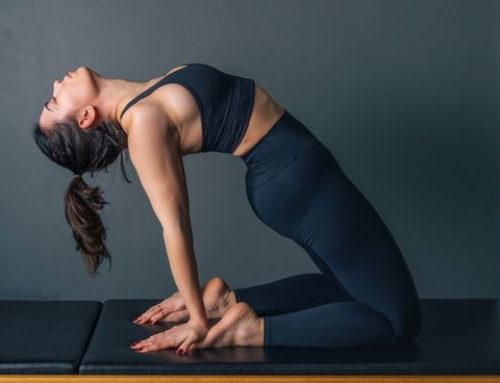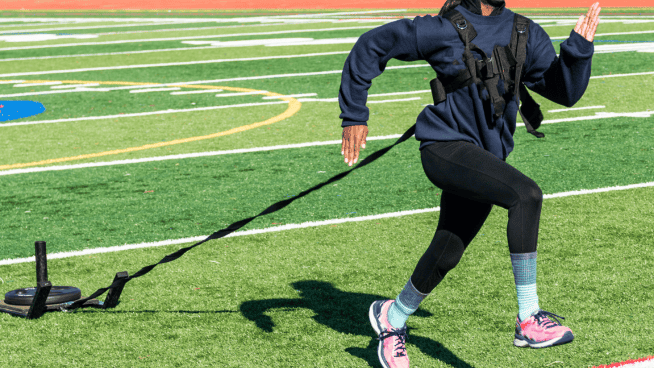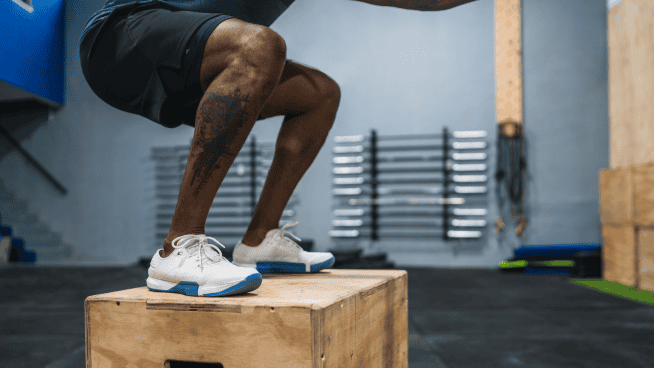The ‘Third World’ Squat: Can Holding This Position Daily Unlock Elite Athletic Performance?
You work your butt off. You run hard, you lift hard, you train hard. You eat right. You sleep right. But what if I told you that no matter how hard you work, you can’t possibly reach your full potential until you master one exercise? And this exercise looks deceptively simple—it requires no weight and no equipment. Toddlers can make it look like a piece of cake.
If you’ve perused any type of online fitness forum over the last couple of years, there’s a chance you’ve come across the term, “Third-World Squat.”
The name’s a bit politically incorrect (henceforth we’ll refer to it as the “Deep Bodyweight Squat” or DBS), but many people in developing countries have become accustomed to assuming this position for extended periods during their daily lives. Allegedly, becoming familiar with this position can have extraordinary benefits for athletes. We talked to Precision Nutrition coach Craig Weller, a former Navy Special Warfare Combatant crew-member and co-owner of Rogue Performance and Barefoot Fitness, to get the lowdown on the DBS.
A Different Perspective
Weller’s military career has taken him all over the globe, and he spread his love of fitness along the way. Weller not only trained American military personnel overseas, he also introduced workouts to foreign military and civilians. For many of these men, it was the first time in their lives they’d done exercises like Squats or Deadlifts. But Weller found them to be extremely adept at these movements, putting the beginners he encounters at his North American gyms to shame. In a shockingly short period of time, they were moving heavy loads with perfect form. He quickly realized that their incredible flexibility and mobility were largely due to a position they often assumed—the DBS. They did it while they were eating, playing games, chatting or just hanging out.
“Everyone would squat like that,” Weller says. “There weren’t chairs available, so people would squat like that just to hang out. It was like they were looking at you from between their knees they would go so low. Their knees were in their armpits. They could squat so low but keep a perfectly neutral spine. I noticed it in Central America, in the Philippine Islands, driving through Nepal. It drove home the point that it was normal. We, as humans, we’re supposed to be able to do that.”
Weller was intrigued and started trying to hold the position himself. He quickly realized that it was harder than it looked. “I felt like it was this fundamental thing a human should be able to do, and I couldn’t. We’re doing all this training in the gym, but many of us [North Americans] are missing this fundamental component of human movement.”
Weller began to practice the position, as did many of his military compatriots. As they got more comfortable in it, they found their performance in the weight room was markedly improving. They were suddenly knocking out Deadlifts from the floor with a neutral spine, squatting deeper, experiencing less low-back pain and feeling sore in their glutes and hamstrings instead of just their quads.
Why Should I Do This?
Weller advises using the DBS for two reasons: it’s a great measuring tool, and it increases performance in the weight room and on the field. The issues you encounter when attempting a DBS say a lot about your body. Weller believes that you can tell a lot about a person just by watching their feet as they try to get into a DBS.
“If their toes are shooting out, they likely have limited internal hip rotation,” he says. “If their ankles are collapsing in, they might have limited ankle flexibility. Same thing if they can’t keep their heels on the ground. It can give you insight into what their mobility and flexibility issues are. The DBS is a key window into pretty much everything your body is going to do. A Squat, if you look at it from the hips down, is just triple flexion and triple extension. Which is exactly what athletes need.”
Triple extension refers to the simultaneous extension of the hips, knees and ankles, which is crucial for nearly every athletic movement from jumping to sprinting to cutting.
“The way a person squats is the way he or she is going to do everything else,” Weller says. “Because that’s the foundation of their motor patterns. Ankles, knees and hips, flexing and extending those joints at the same time is the basis for every type of athletic movement.” He believes that most athletes train only half of their range of motion with a traditional Squat, which is limiting their athletic abilities.
Essentially, if you’re only training the top range of motion of your Squat, you’re only training half of the motor patterns. Weller says, “When it comes time to get that extra range of motion, on the field, on the court, in the gym, wherever, you’re going to have to break positioning. So if when you squat deeply you have to roll your knees or your ankles or do whatever weird thing, you’re training your body to do that. So now you’re training for dysfunction in mobility.” Quite simply, if you practice this position off the field, your body will be ready for it on the field.
RELATED: These 9 Exercises Will Improve Your Hip Mobility
What Does It Look Like?
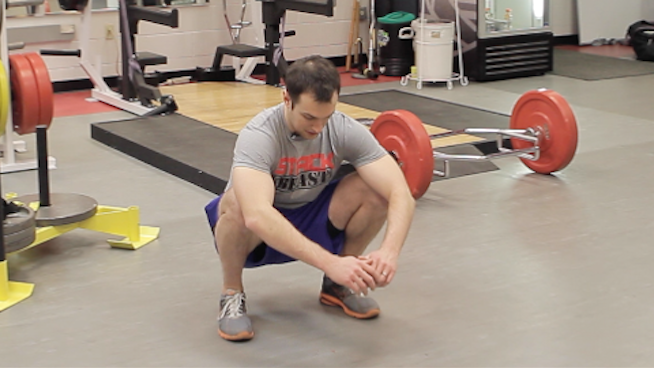
The DBS looks simple. You set your feet a bit wider than shoulder-width apart and pointing straight ahead. You want equal weight distribution in your feet, meaning your heels stay on the ground and weight is distributed over the arch. You want to lower your rib cage and hold a neutral spine. When you drop into the Squat, you don’t want your knees to move forward or your back to arch. Just drop your butt straight down. As you squat, you want your knees over your pinky toes. Keep a neutral spine throughout the movement.
The key for the DBS is that you go well past parallel—and hold it. This video from Weller’s Rogue Gym shows you how to get into the initial position.
How Do I Do It?
You probably won’t be able to execute a proper DBS right away. Don’t worry, few can. Weller suggests that beginners practicing the position should find an anchor to hold on to. “A lot of people will fall over backwards when they try to go deep, so find something in front of you, like a door knob or door frame. Pull on it just enough so you don’t tip over backwards,” he says. This will allow you to get deep into the position without using all of your energy just to stay upright. Weller suggests sitting in the assisted DBS for about a minute a day until you feel comfortable without assistance. Do it either prior to your workout or after an extended period of sitting or standing.
As you become more comfortable in the DBS, your flexibility and mobility will slowly improve. When you’re ready, ditch the door knob for support and work toward a true DBS. When all is said and done, you should be in a position that looks something like what shown in this video.
Hitting that position is a big accomplishment, but how long should you hold it? Despite some sources claiming you should hold it for extended periods of time (10 minutes or a half hour per day), Weller suggests simply holding it at least once each day. He says, “It’s beneficial to hit that position every day. Motion is medicine. You need motion for circulation and preservation. It’s easy to go a whole day without getting in that position and instead kneeling or just sitting down. So when there’s a time in the day that you need to bend over or go low to get something, pop a DBS. Any number like 10 minutes or a half-hour is arbitrary. Just hit the position every day. If there is a time that you should be able to comfortably hold it, several minutes is where you want to be, and then be able to stand up with no pain.”
RELATED: Increase Flexibility Without Stretching
RECOMMENDED FOR YOU
MOST POPULAR
The ‘Third World’ Squat: Can Holding This Position Daily Unlock Elite Athletic Performance?
You work your butt off. You run hard, you lift hard, you train hard. You eat right. You sleep right. But what if I told you that no matter how hard you work, you can’t possibly reach your full potential until you master one exercise? And this exercise looks deceptively simple—it requires no weight and no equipment. Toddlers can make it look like a piece of cake.
If you’ve perused any type of online fitness forum over the last couple of years, there’s a chance you’ve come across the term, “Third-World Squat.”
The name’s a bit politically incorrect (henceforth we’ll refer to it as the “Deep Bodyweight Squat” or DBS), but many people in developing countries have become accustomed to assuming this position for extended periods during their daily lives. Allegedly, becoming familiar with this position can have extraordinary benefits for athletes. We talked to Precision Nutrition coach Craig Weller, a former Navy Special Warfare Combatant crew-member and co-owner of Rogue Performance and Barefoot Fitness, to get the lowdown on the DBS.
A Different Perspective
Weller’s military career has taken him all over the globe, and he spread his love of fitness along the way. Weller not only trained American military personnel overseas, he also introduced workouts to foreign military and civilians. For many of these men, it was the first time in their lives they’d done exercises like Squats or Deadlifts. But Weller found them to be extremely adept at these movements, putting the beginners he encounters at his North American gyms to shame. In a shockingly short period of time, they were moving heavy loads with perfect form. He quickly realized that their incredible flexibility and mobility were largely due to a position they often assumed—the DBS. They did it while they were eating, playing games, chatting or just hanging out.
“Everyone would squat like that,” Weller says. “There weren’t chairs available, so people would squat like that just to hang out. It was like they were looking at you from between their knees they would go so low. Their knees were in their armpits. They could squat so low but keep a perfectly neutral spine. I noticed it in Central America, in the Philippine Islands, driving through Nepal. It drove home the point that it was normal. We, as humans, we’re supposed to be able to do that.”
Weller was intrigued and started trying to hold the position himself. He quickly realized that it was harder than it looked. “I felt like it was this fundamental thing a human should be able to do, and I couldn’t. We’re doing all this training in the gym, but many of us [North Americans] are missing this fundamental component of human movement.”
Weller began to practice the position, as did many of his military compatriots. As they got more comfortable in it, they found their performance in the weight room was markedly improving. They were suddenly knocking out Deadlifts from the floor with a neutral spine, squatting deeper, experiencing less low-back pain and feeling sore in their glutes and hamstrings instead of just their quads.
Why Should I Do This?
Weller advises using the DBS for two reasons: it’s a great measuring tool, and it increases performance in the weight room and on the field. The issues you encounter when attempting a DBS say a lot about your body. Weller believes that you can tell a lot about a person just by watching their feet as they try to get into a DBS.
“If their toes are shooting out, they likely have limited internal hip rotation,” he says. “If their ankles are collapsing in, they might have limited ankle flexibility. Same thing if they can’t keep their heels on the ground. It can give you insight into what their mobility and flexibility issues are. The DBS is a key window into pretty much everything your body is going to do. A Squat, if you look at it from the hips down, is just triple flexion and triple extension. Which is exactly what athletes need.”
Triple extension refers to the simultaneous extension of the hips, knees and ankles, which is crucial for nearly every athletic movement from jumping to sprinting to cutting.
“The way a person squats is the way he or she is going to do everything else,” Weller says. “Because that’s the foundation of their motor patterns. Ankles, knees and hips, flexing and extending those joints at the same time is the basis for every type of athletic movement.” He believes that most athletes train only half of their range of motion with a traditional Squat, which is limiting their athletic abilities.
Essentially, if you’re only training the top range of motion of your Squat, you’re only training half of the motor patterns. Weller says, “When it comes time to get that extra range of motion, on the field, on the court, in the gym, wherever, you’re going to have to break positioning. So if when you squat deeply you have to roll your knees or your ankles or do whatever weird thing, you’re training your body to do that. So now you’re training for dysfunction in mobility.” Quite simply, if you practice this position off the field, your body will be ready for it on the field.
RELATED: These 9 Exercises Will Improve Your Hip Mobility
What Does It Look Like?

The DBS looks simple. You set your feet a bit wider than shoulder-width apart and pointing straight ahead. You want equal weight distribution in your feet, meaning your heels stay on the ground and weight is distributed over the arch. You want to lower your rib cage and hold a neutral spine. When you drop into the Squat, you don’t want your knees to move forward or your back to arch. Just drop your butt straight down. As you squat, you want your knees over your pinky toes. Keep a neutral spine throughout the movement.
The key for the DBS is that you go well past parallel—and hold it. This video from Weller’s Rogue Gym shows you how to get into the initial position.
How Do I Do It?
You probably won’t be able to execute a proper DBS right away. Don’t worry, few can. Weller suggests that beginners practicing the position should find an anchor to hold on to. “A lot of people will fall over backwards when they try to go deep, so find something in front of you, like a door knob or door frame. Pull on it just enough so you don’t tip over backwards,” he says. This will allow you to get deep into the position without using all of your energy just to stay upright. Weller suggests sitting in the assisted DBS for about a minute a day until you feel comfortable without assistance. Do it either prior to your workout or after an extended period of sitting or standing.
As you become more comfortable in the DBS, your flexibility and mobility will slowly improve. When you’re ready, ditch the door knob for support and work toward a true DBS. When all is said and done, you should be in a position that looks something like what shown in this video.
Hitting that position is a big accomplishment, but how long should you hold it? Despite some sources claiming you should hold it for extended periods of time (10 minutes or a half hour per day), Weller suggests simply holding it at least once each day. He says, “It’s beneficial to hit that position every day. Motion is medicine. You need motion for circulation and preservation. It’s easy to go a whole day without getting in that position and instead kneeling or just sitting down. So when there’s a time in the day that you need to bend over or go low to get something, pop a DBS. Any number like 10 minutes or a half-hour is arbitrary. Just hit the position every day. If there is a time that you should be able to comfortably hold it, several minutes is where you want to be, and then be able to stand up with no pain.”

